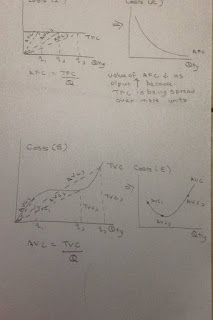Just a random thought of this. It seems that the selling point of the
proponents of Brexit is, EU immigrants are taking away jobs from the
natives. I don't quite agree on this. This is because:
a) When they gain employment, they will increase consumption into the real economy. More good and services will have to be produced. This means more manpower will be needed
a) When they gain employment, they will increase consumption into the real economy. More good and services will have to be produced. This means more manpower will be needed
b) They also contribute significantly to tax revenue. This improves government finances and as a result, more jobs can be created in the public sector or at least, it stops the government from continuing to lay off workers
The labour market fallacy comes from the assumption that the number of jobs are static/ fixed. So, as immigrants filled up one, there will be one less opening for the natives. Well, this is not quite true. The labour market is flexible. It adapts and evolves. In short, it is dynamic. Many more jobs will be created as fast as they are taken up
Foreign workers are only a threat under the following circumstances:
a) Bulk of the income is sent back as remittances. However, they still need to spend substantially within the UK due to the high costs of living
b) They increase the supply of labour thereby reducing the equilibrium market wage. While migrants are prepared to accept low paid jobs, the natives aren't. However, this cannot be said as taking away jobs. If locals are willing to accept, they will still get employed
c) Foreign workers are more skilled than locals. However, this will not become a major issue if the unemployed are prepared to make themselves more marketable to potential employers by improving their existing skill levels/ education attainment. Job market today isn't the same as the past. So, there must come a point where all job-seekers must remain competitive and relevant




